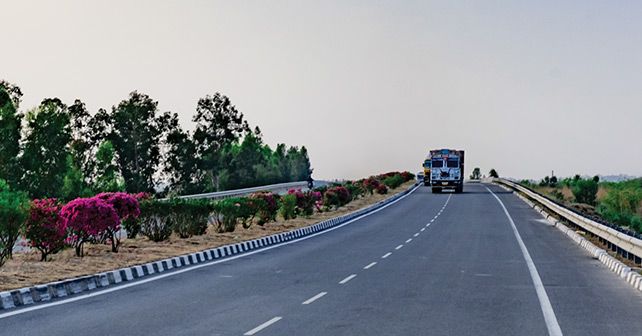
A majority of crashes on our highways can be attributed to medians with high kerbs. Hopefully, they will be a distant, unpleasant memory, says Srini.
As you effortlessly cruise down any of our highways, you must be thinking, wow, we are finally getting good roads in our country. They are smooth, well-marked, with good signage, plenty of run-off areas on the sides, broad medians in the centre, clear sight lines, etc. Consequently, they feel safe too. But are they?
You’d think any crash that takes place typically has to do with overspeeding, wrong overtaking, driving drunk, vehicle malfunction, poor lighting, environment conditions and what have you. But when you are on the fast lane in broad daylight, with the raised median to your right, bordered by a neatly painted 10-inch high kerb, such thoughts are far from your mind. The fact is you are dicing with danger for no fault of yours.
Suppose you are distracted while reaching out to a water bottle placed on your extreme left and don’t realise the road is curving. Suppose a wandering bovine decides to cross the road into your lane. Suppose you looked down to see who’s calling on your mobile. Suppose you are sticking to the 100 km/h speed limit, but are distracted while chatting with your friends in your car.
Reasonable assumptions, right? In each of these cases, if you had hit the raised median because of a temporary lack of alertness, you would have mounted it or your vehicle would have flipped. In both cases, you would present an unavoidable target to oncoming traffic on the other side of the road. Surprised? So was I.
In fact, each of those four examples I gave above are from real life. The first instance was of an SUV driven by Harikrishna, son of legendary Telugu actor and politician NTR, in Telangana. The second took place in Dausa in September 2018 when the driver swerved to avoid cattle and hit the divider, flinging the car in the path of an oncoming truck. The third example is that of a bus driver who picked up his mobile while speeding near Mainpuri, hit the median and toppled the bus, snuffing the lives of 17 innocents. The last was from September 2019 when a car, with five students inside, hit the divider of the Yamuna Expressway, flipped several times and crashed into a moving bus on the other side.
Despite what press reports say or statistics declare, more crashes are attributed to vehicles mounting kerbs or flipping over these raised medians as the main cause. But I can’t give you specific data, because road crash data study collection is unfortunately extremely poor in our country. As I had mentioned in this column earlier, to know what medicine to take, you need to first identify the problem, right?
At least now, the Ministry of Road Transport & Highways has identified that medians with high kerbs of 250mm upwards are actually dangerous, amplifying the crash. Vehicles at speeds above 40 km/h, due to modern suspension travel, tend to get destabilized when they hit the kerb, leading to them flipping over or launching onto the other side. (Crash barriers should ideally stop them, but I’ll keep that for another day.)
“The combination of the kerb height and speed is a deadly mix,” says Bharat Anand, partner in Safety First, a Delhi-based company specializing in crash barriers, and road safety evangelist.
But after nearly two years of dedicated work with inputs from experts, MoRTH has recognised the problem. It was Bharat who informed me of the good news that the Ministry passed a circular on January 1 this year, stating there will be no more raised medians. And importantly, existing ones have to be removed. To quote: “Since the multi-lane highways being designed as partially controlled highway for higher speeds, raised median may be a safety hazard and may cause severe accidents/fatalities once the errant vehicle strikes the raised median.” These will be replaced by depressed or flush medians, with crash barriers.
In 2018, national and state highways together contributed to well over half of all road crashes in the country, leading to a whopping 62.4 per cent of all fatalities. The recognition of raised medians as a major cause of these crashes by MoRTH is a shot in the arm for road safety. Credit should go to all the key members in the Ministry who have been able to shrug off the stereotyped bureaucratic indifference, taken inputs from Indian and international experts, and have addressed this critical issue. One only hopes all national and state highway authorities act upon it without any delay.
Srinivas Krishnan writes about classic and vintage cars for various publications. He is the former Editor of Business Standard Motoring & former Head of Press, Porsche India.
Also read - The adverse effects of states & politicians going back on the new MVA
Draft Govt notification on vintage cars has ruffled feathers






















1 Comment
Nice progress by morth. Much progress is made in the last few years under a new leadership.
Reply